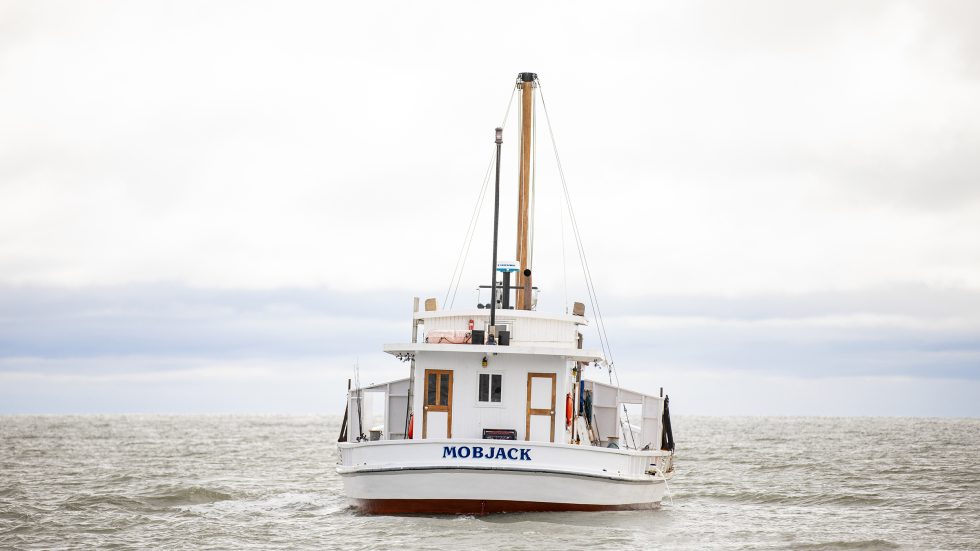According to studies conducted by the American Sportfishing Association, 70 percent of those of us who fish were introduced to the sport by the time we were 12 years old. Most of us actually started fishing even earlier than that, thanks to an adult who took the time to teach and take us fishing. Ten is the age many experts say is prime time to expose a child to angling, and that kids as young as 5 can pick up the sport.
I’ve introduced thousands of children to fishing through my “Kids Fishing 411” programs that I’ve conducted at boat shows across the Heartland for the past decade and a half. But some of my most enlightening moments as a fishing teacher have come in the past dozen, since becoming a first-hand dad, and I use what I’ve learned every time I have the chance to take a kid fishing.
For example, I know to keep a pair of needle-nosed pliers handy at all times, for taking hooks out of fish, fisherman and instructor. I realize the bargaining power of snacks and cold drinks to get and keep kids’ attention. I recognize how important it is for children to have their own rod and tackle and box in which to stash their own fishing stuff. I’ve learned to allow the kids to practice basic skills far from the water and the distraction that its finned contents represent.
Over the years I’ve honed hundreds of ideas, techniques and experiences into a series of tips that have helped me introduce kids to my favorite sport. Here are my top 10.
Tip #1: Start the fishing lesson at home. You can begin the lesson several days or weeks in advance of the actual trip by visiting the local library to check out books on the subject and by visiting a local bait and tackle shop, allowing the youngster to be a part of the process of selecting tackle, seeing the live bait choices and asking about good places to go fishing.
Tip #2: Practice casting, knot tying and bobber-setting at home or at the local park. Work on these fundamentals where errant casts can’t catch in overhead trees or stream-side brush, and knots can be figured out without the pressure of having to catch fish. Make casting a game unto itself by setting up targets in the yard.
Tip #3: Keep the child’s fishing equipment simple. A cane pole is a great first fishing rod, especially for younger anglers. So is simple spin-casting tackle, such as the special youth models now offered by several tackle manufacturers. But buy the best you can afford; the really inexpensive fishing rigs can be break easily and may be so frustrating that they do more harm than good. Allow the child to have his or her own tackle box, in which to store hooks, bobbers and sinkers.
Tip # 4: Consider trading in your tackle for a camera for the day. By leaving your own tackle at home, you’re more likely to stay involved in the child’s activities — and less tempted to get caught up in the catching yourself. With a camera, you can record the day’s activities, including that most momentous of events: a child’s first fish.
Tip #5: Select a place to fish from shore that offers an abundance of easily caught panfish, such as bluegill, crappie or perch. Docks or piers are excellent places to start, because they’re clear of trees and other obstacles that snag casts, and provide cover below the water for fish. Open shoreline areas along ponds, lakes and slow-moving streams can be good too. Boats can be used for these first fishing trips, but keep in mind that kids need space when fishing and often feel confined when having to stay aboard a boat for any length of time. Roomy and stable deck and pontoon boats make the best craft for those first fishing trips with kids.
Tip #6: Use live bait. Nothing catches panfish more consistently that live bait such as worms, nightcrawlers, crickets or minnows, and a primary goal of these first fishing trips is to catch fish in order to maintain a child’s interest in the activity. Live bait is also interesting for the child to touch and play with, which he or she should be allowed to do when the fishing gets slow or the youngster simply wants to do something else for a while.
Tip #7: Use a bobber. Nothing is as fascinating to a child as a bobber dancing on the surface, especially when the child knows what’s causing it. The bobber also provides some casting weight, allows the child to see and feel strikes, and keeps the bait up off the bottom in front of the fish and away from underwater snags.
Top #8: Take plenty of snacks and drinks, different kinds of bait for variety, and make sure you’ve got raingear, jackets to match the weather, and insect repellant and sunscreen if needed. You want the child to be as comfortable as possible during the fishing session.
Tip #9: Keep the first sessions short. When the child says it’s time to go home — go! You want these first trips to be remembered as something fun, and when the fun ends for a child, it’s time to end the fishing trip, no matter how well the fish are biting or how early in the trip it might be.
Tip #10: Talk to the child during the fishing trip. Talk about anything, remembering that these are important times for youngsters, who value their time with you (whether they show it or not) providing a perfect opportunity for both of you to share feelings about anything under the sun. You can discuss angling topics like conservation, fishing tactics, what makes a bobber work, or social subjects like what it takes to do well in school or get along with friends or siblings.
No matter when or where your fishing lessons take place, remember how important these times are to the child you’re sharing them with. Be patient, and keep in mind that if all goes well, he or she just might turn out to be your new best fishing buddy!



